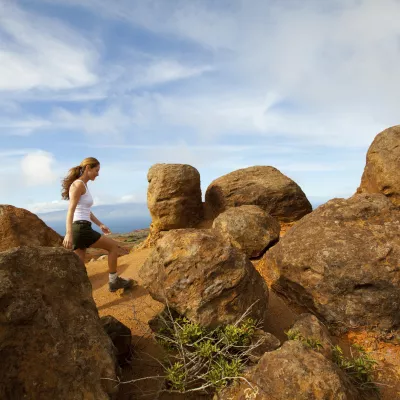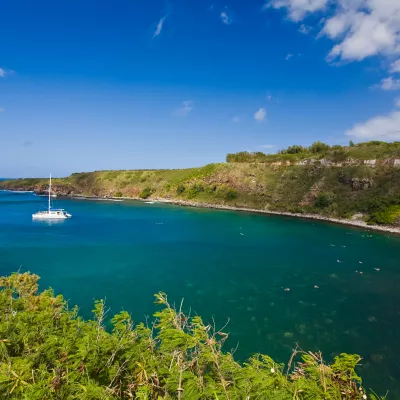Regions of Kauaʻi
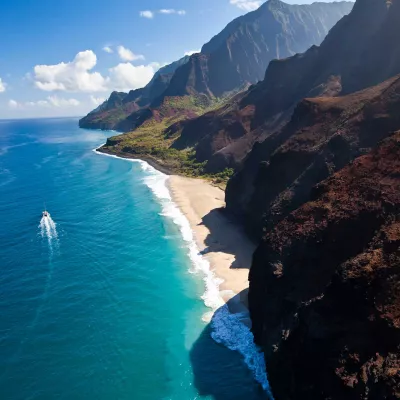
Bordée de paysages époustouflants tels que les falaises de la côte de Napali, cette partie de l’île enchantera les amoureux de la nature.

La côte est de Kauai est parfois surnommée « Coconut Coast » à cause de ses cocoteraies.
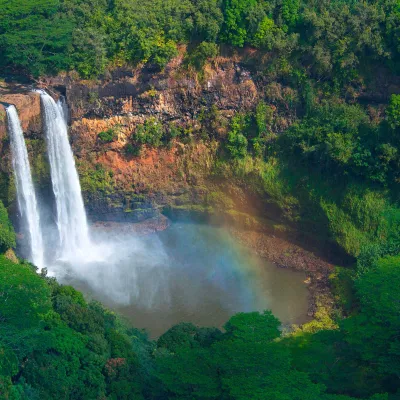
Ce centre administratif et commerçant de l’île est entouré de perles de la nature telles que les cascades de Wailua (Wailua Falls).
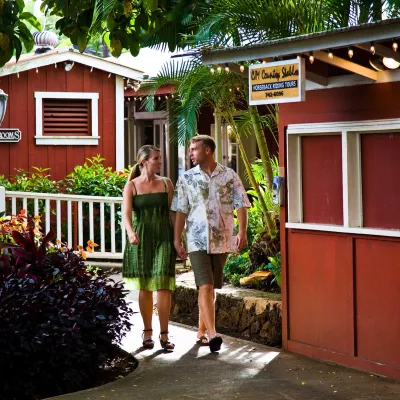
Dans la partie sud de l’île vous attendent des sites culturels, historiques et géologiques ainsi que quelques belles plages.
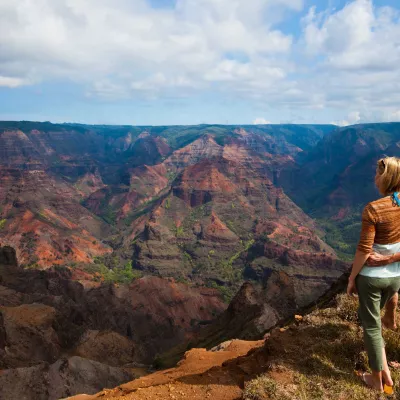
Découvrez les charmes de la ville artistique d’Hanapepe, le décor époustouflant du Kokee State Park et bien plus encore.
Regions of Oʻahu
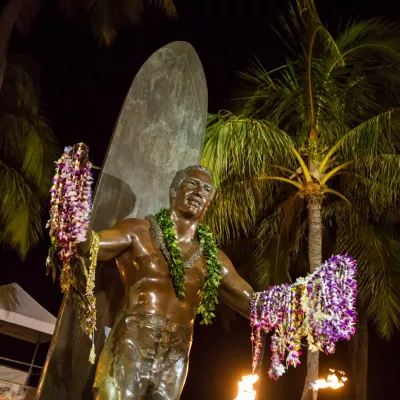
Honolulu is the state capital and largest city in Hawaiʻi, offering a unique combination of tropical glamor and a bustling international metropolis where sandy beaches meet city streets.
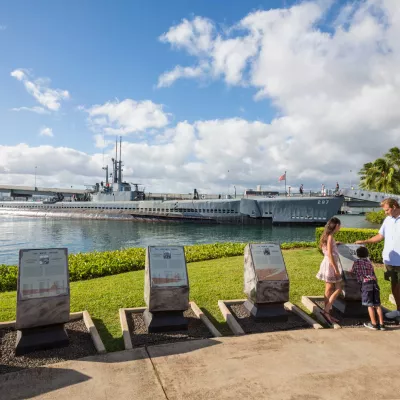
Get a unique insight into World War II with a visit to Pearl Harbor or explore the island's agricultural traditions at the Dole Pineapple Plantation.
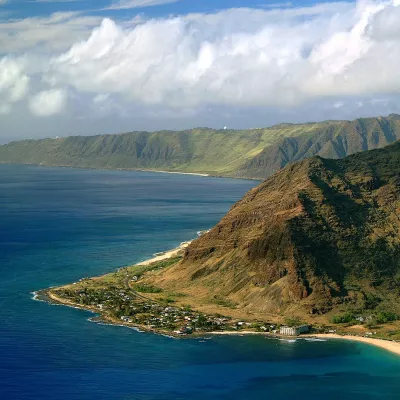
This area on Oʻahu's west side is home to rural towns, secluded beaches, and a luxury resort town, Ko Olina.
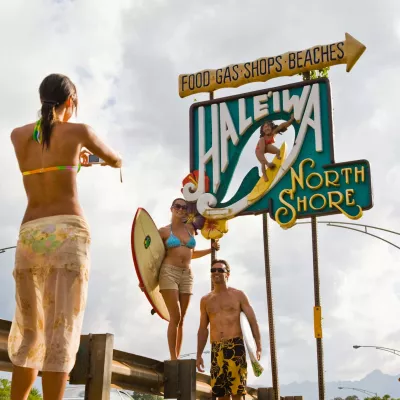
Meet master surfers and locals on the North Shore of Oʻahu, the big wave surfing capital of the world.
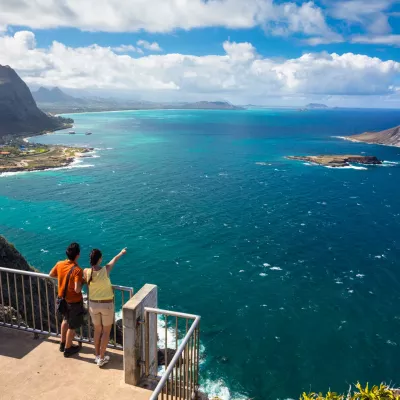
Just a short drive from Honolulu, you'll find the highlights of Oʻahu's verdant Windward Coast. These include the tranquil Byodo-in Temple and the adventurous Kuoloa Ranch.
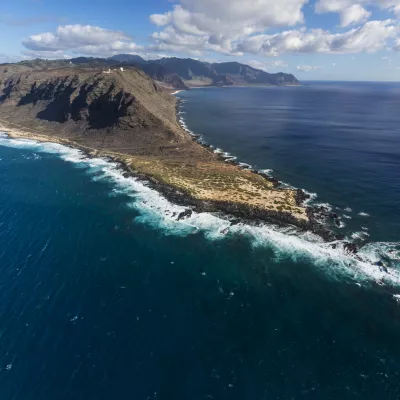
Kaʻena Point is a scenic and sacred spot where, legend says, the souls of ancient Hawaiians would jump off into the spirit world to meet the souls of their ancestors.

The most popular beach on the Leeward Coast offers ocean-lovers a long stretch of golden sand to play or relax.
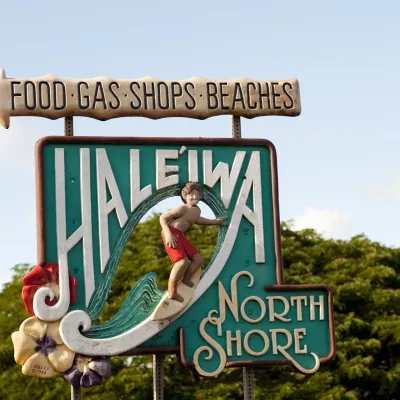
This laid-back surfer town offers beautiful beaches, tasty local restaurants and food trucks, cool shops and plenty of shave ice.

This beloved beach is popular with locals and visitors alike, and was an influential surf spot during the dawn of big wave surfing in the 1950s.
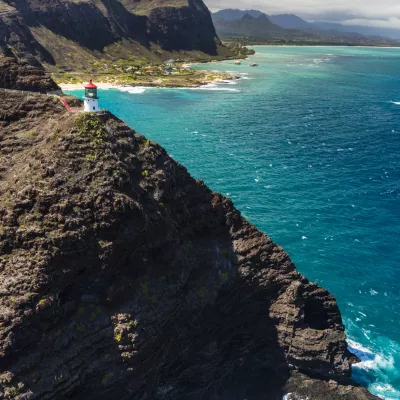
Hike to this scenic point on Oʻahu’s easternmost tip for incredible views and whale watching during the winter.
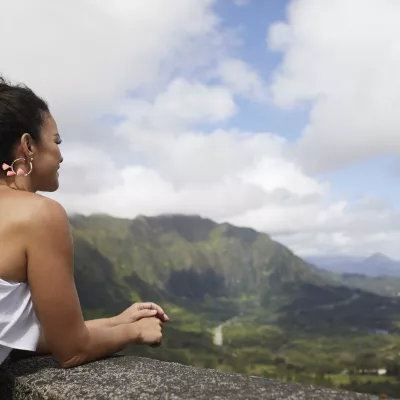
Nuʻuanu Pali Lookout is one of Oʻahu’s most popular scenic spots, with panoramic views of the Windward Coast and the Koʻolau Mountains.
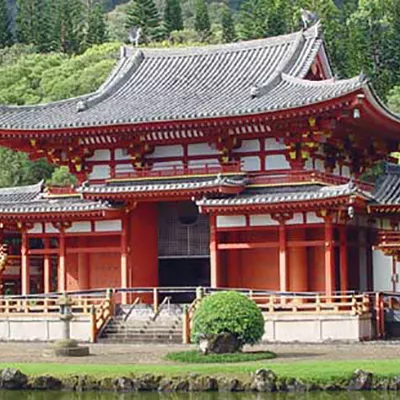
Valley of the Temples Memorial Park houses Byodo-in, a stunning replica of a Japanese Buddhist Temple set in a lush forest.
Regions of Molokaʻi
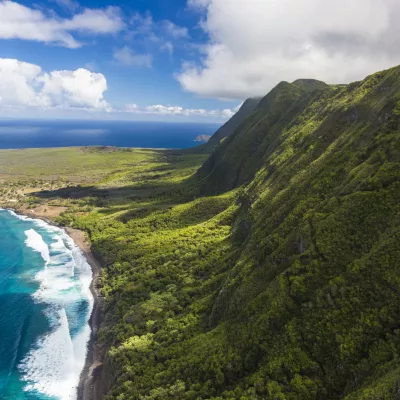
Explore the 2,000-foot-high cliffs that rise above spectacular seascapes to visit one of the most remote settlements in the Hawaiian Islands.
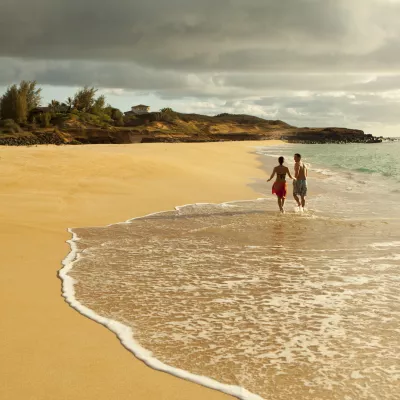
Swim or snorkel in the turquoise waters at Pāpōhaku Beach in Molokaʻi's West End, or explore unique shops and museums in charming Maunaloa.

Take a guided hike through the Kamakou Preserve, a tropical paradise with breathtaking nature.
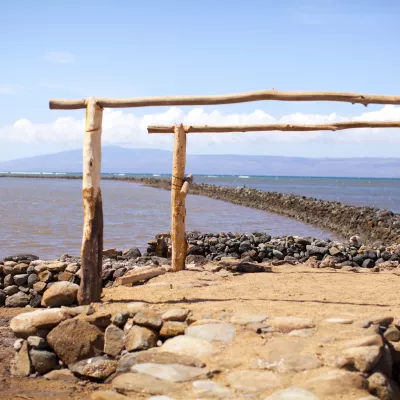
Built from lava rock and coral, these 13th-century fishponds were etched into Molokaʻi’s shoreline to supply local aliʻi (royalty) with sustenance.
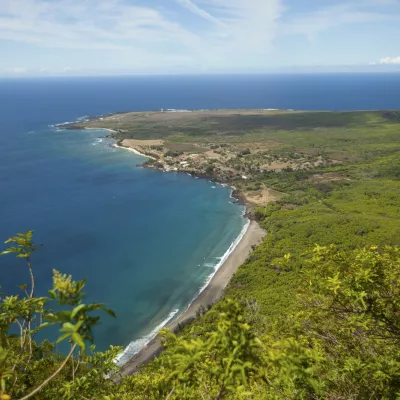
Take a memorable mule ride down the highest sea cliffs in the world to reach the incredibly remote—and formerly forbidden—settlement of Kalaupapa.
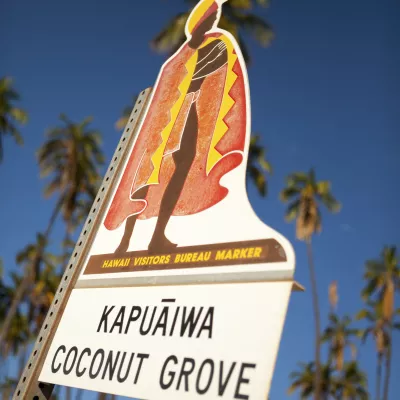
This dense grove of coconut palms, planted during the reign of King Kamehameha V, is one of Molokaʻi’s most recognizable landmarks.
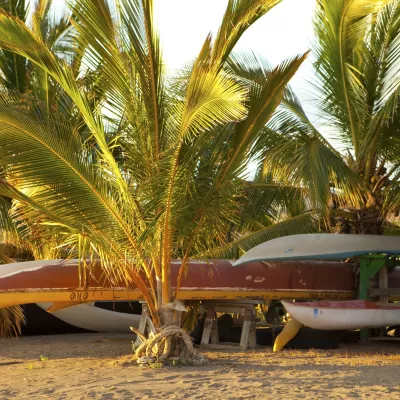
Browse unique local shops and eateries, visit historic landmarks and stroll down Hawaiʻi’s longest pier in Molokaʻi’s quaint main town.
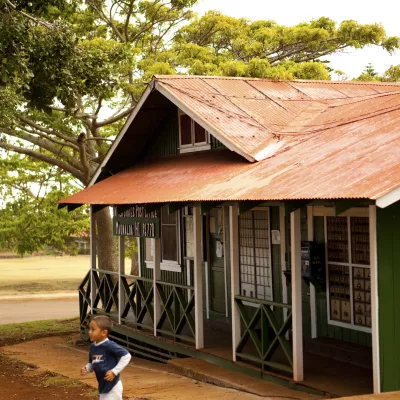
Venture to Maunaloa, a small plantation village set in the hills above the coast, where you’ll find unique shopping and lodging options.
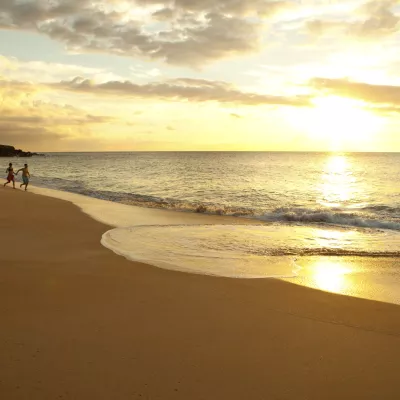
At three miles long, Pāpōhaku Beach is one of the largest white sand beaches in Hawaiʻi, offering distant views of Diamond (Diamond Head) on Oʻahu.
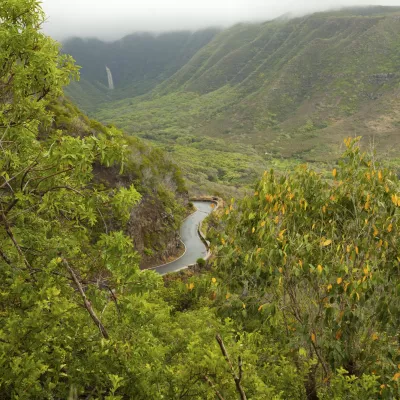
Take a guided hike into this impossibly lush cathedral valley, blessed with beautiful vistas and towering waterfalls that look straight out of the Jurassic Period.
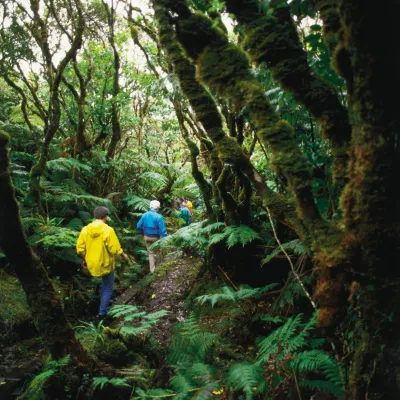
Hike beneath moss-covered branches in Kamakou Preserve, a nature conservancy site that contains rare native Hawaiian birds and plants.
Regions of Lānaʻi
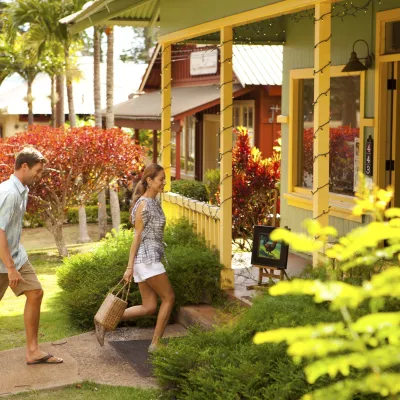
Historic Dole Park, formerly a village of houses for Dole Plantation employees, is now home to eclectic art galleries, boutiques and cafes.
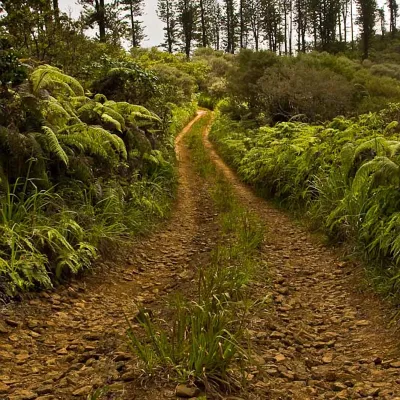
Download the free Lānaʻi Guide app for community-supported hikes, self-guided driving, walking tours and history. All of which will foster a deeper cultlural understanding of and respect for this unforgettable island.
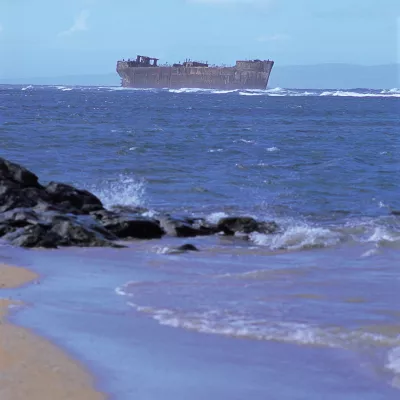
Four-wheel drive about a half-hour north from Lānaʻi City and you’ll discover Kaiolohia.
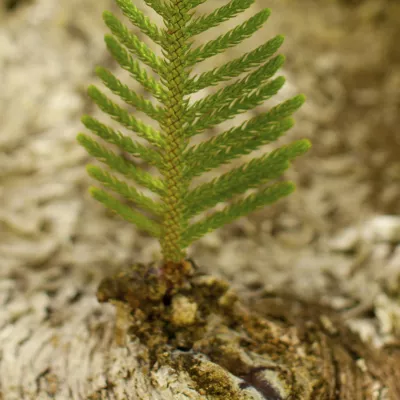
The Nature Conservancy protects this forest, which contains the largest remnants of olopua/lama dry land forest in Hawaiʻi.
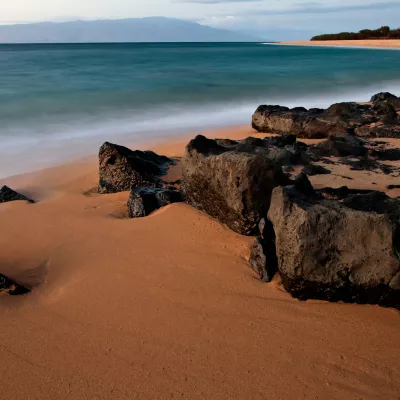
For visitors looking for an off-the-beaten-path getaway, Lānaʻi offers the secluded sands of Polihua Beach.
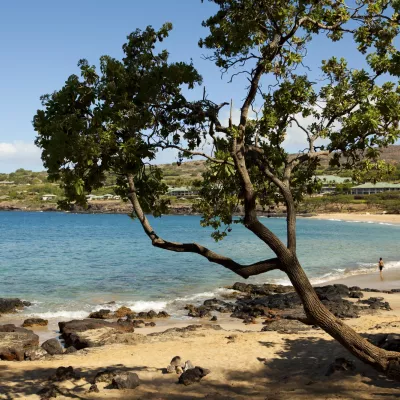
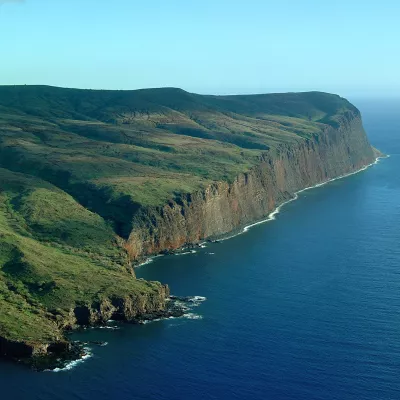
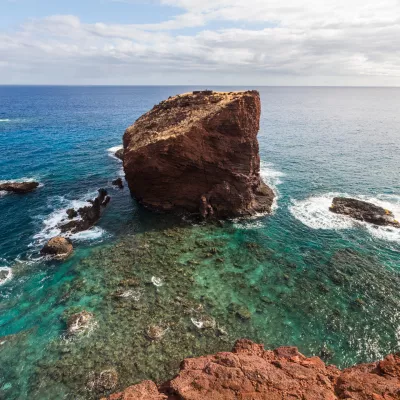

Regions of Maui
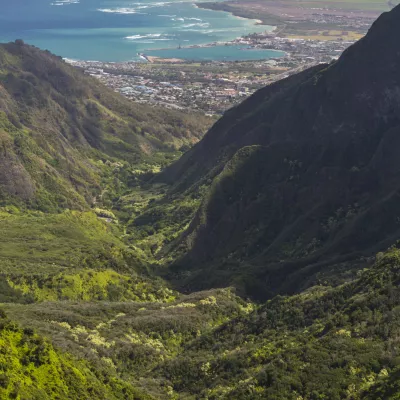
In Kahului befinden sich der wichtigste Flughafen der Insel und interessante Sehenswürdigkeiten. Besuchen Sie Wailuku mit seinen Mom-and-Pop-Shops und Restaurants auf dem Weg zum Iao Valley State Park.
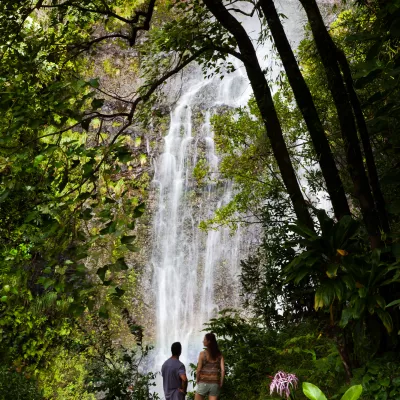
Besucher, die mutig die Haarnadelkurven und engen Brücken des Hana Highway auf sich nehmen, werden mit dem atemberaubenden Blick auf üppige Regenwälder, wunderschöne Wasserfälle und exotische Strände belohnt.
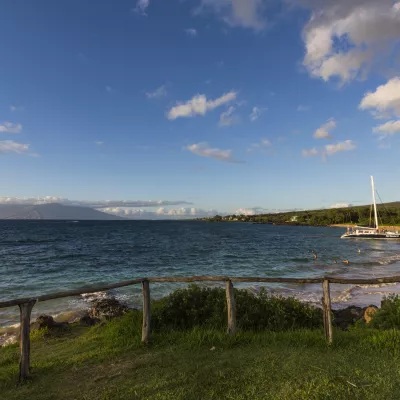
Entspannen Sie sich an den tropischen Stränden von Kihei, Makena und Wailea. Erholen Sie sich in einem erstklassigen Resort oder spielen Sie eine Runde auf einem der 13 weltbekannten Golfplätze.
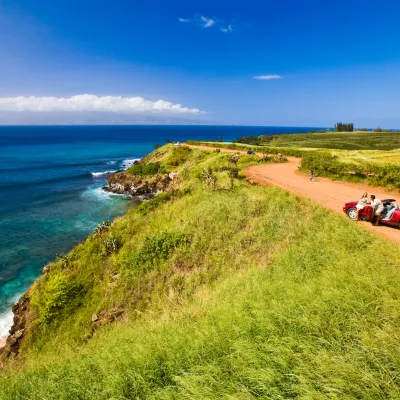
Kaanapali Beach ist einer der bekanntesten Küstenabschnitte von Maui und bietet ein 4,8 km langes Paradies mit Abenteuern und purer Entspannung.

Sehen Sie den Sonnenaufgang vom Gipfel des Haleakala, blicken Sie auf die alten Wüstenlandschaften Hawaiis und entdecken Sie einzigartige, lokal angebaute Speisen.
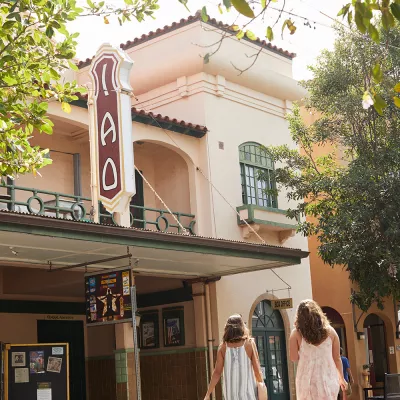
Visit Wailuku and explore the charming wooden storefronts around Market Street, showcasing dozens of family businesses, many of which have been in continuous operation for generations.
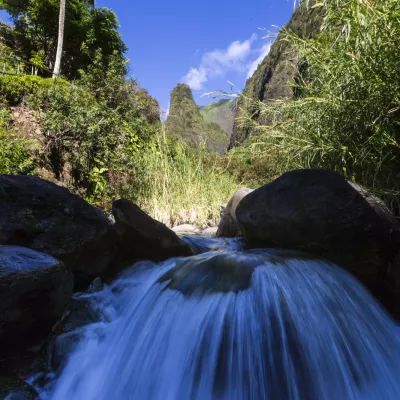
This peaceful 4,000-acre, 10-mile long park is home to one of Maui's most recognizable landmarks, the 1,200-foot ʻĪao Needle.
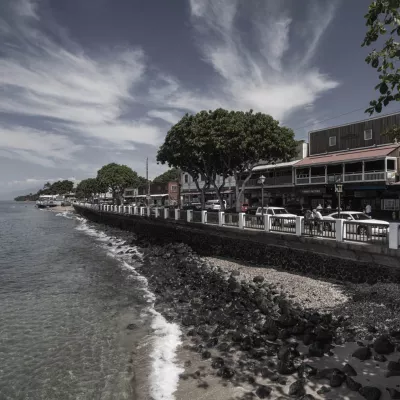
Once known as Lele, which means “relentless sun” in Hawaiian, Lahaina is a historic town that has been transformed into a Maui hotspot with dozens of art galleries and a variety of unique shops and restaurants.
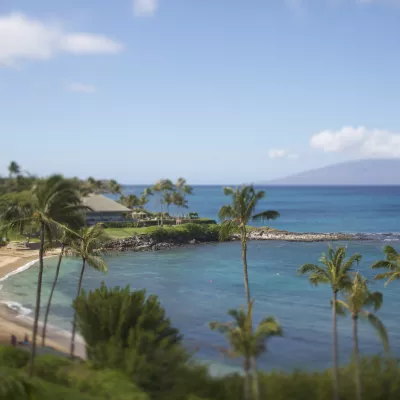
Kapalua, loosely translated to “arms embracing the sea,” is one of Maui’s premier resort areas located at the foot of the verdant Mauna Mauna Kahālāwai, or West Maui mountains.
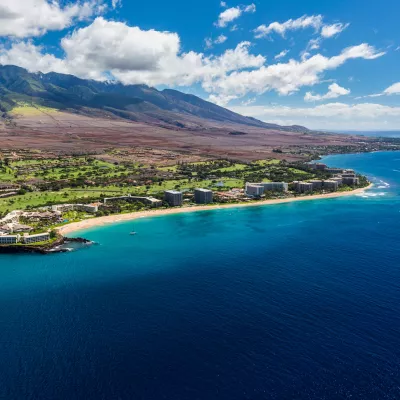
With three miles of white sand and crystal clear water, it’s no wonder why Kāʻanapali Beach was once named America’s Best Beach.
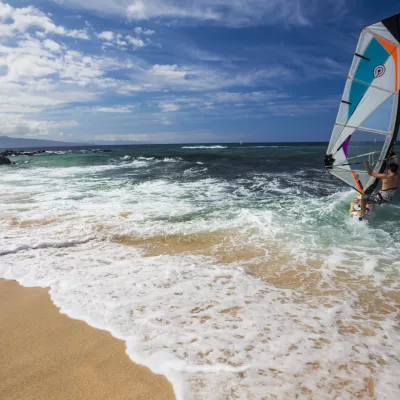
Just four miles into your drive to Hāna from Kahului, you'll discover the historic town of Pāʻia on Maui's north coast.
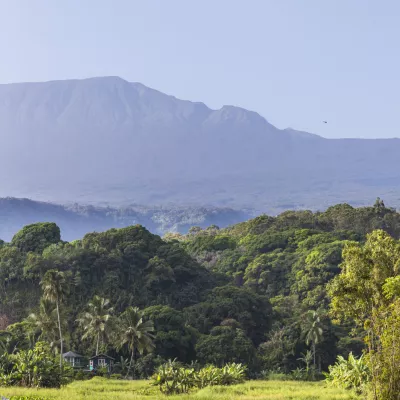
Towering over the island of Maui and visible from just about any point, Haleakalā Crater is a force of nature in every sense.
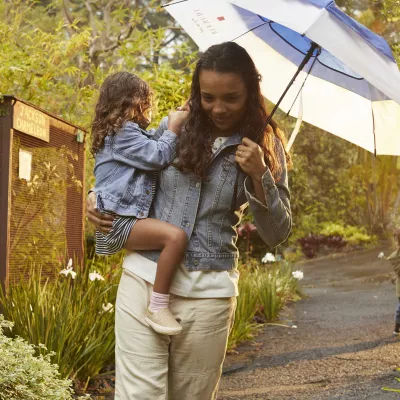
In the heart of Upcountry Maui, Kula is a quaint, rustic area on the slopes of Haleakalā.
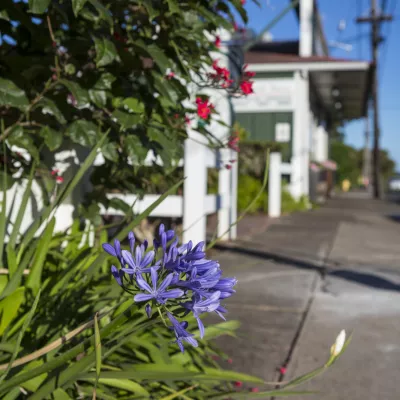
Located on the mid-slopes of Maui’s Haleakalā volcano, Makawao has one foot in its plantation past and another in its thriving arts community.
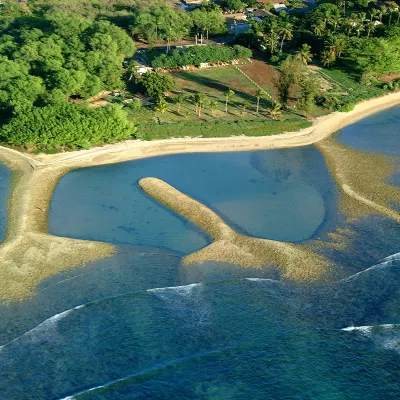
Kīhei is beach-combing territory on Maui’s southwest shore, the sunniest, driest end of the island.
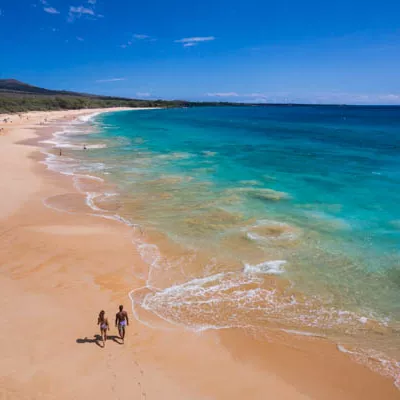
Maui's southwestern shores are home to many extraordinary beaches, including Mākena Beach, also known as "Big Beach" and considered one of the island's best.
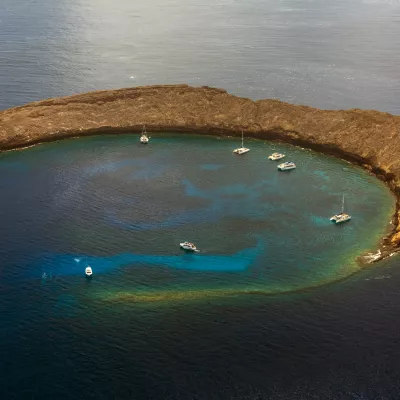
Molokini is a small, crescent moon-shaped islet that is a State Marine Life and Bird Conservation District.
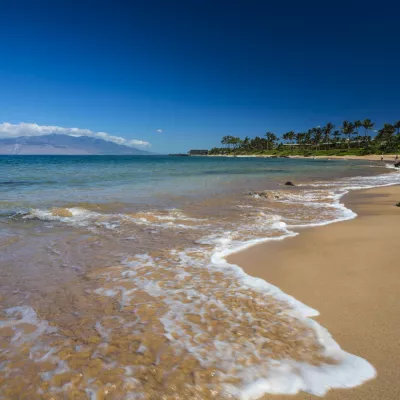
Known for its five beautiful, crescent-shaped beaches and stellar golf courses, Wailea is a luxurious resort community in South Maui that spans 1,500 acres of land with staggering ocean views.
Regions of Island of Hawaiʻi
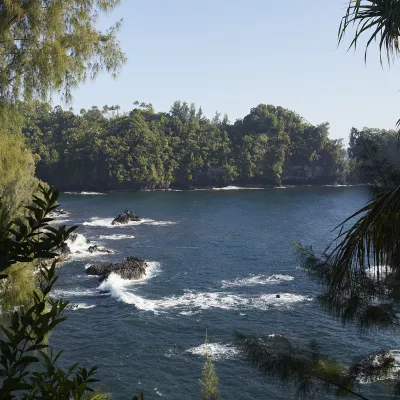
Si vous parcourez en voiture la côte d’Hamakua, ne manquez pas d’explorer certains de ses trésors cachés : plantations de taro, plages de sable noir, cascades à couper le souffle et bien plus encore.
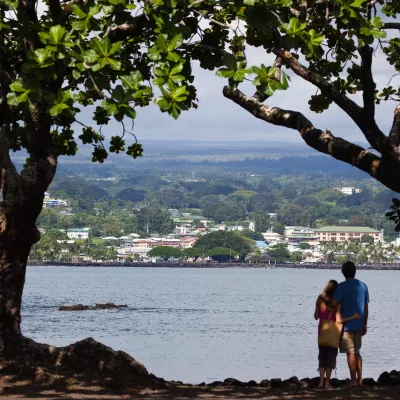
L’endroit idéal pour flâner dans les boutiques locales, découvrir le célèbre marché de producteurs, se prélasser sur des plages paradisiaques et explorer des cascades extraordinaires.
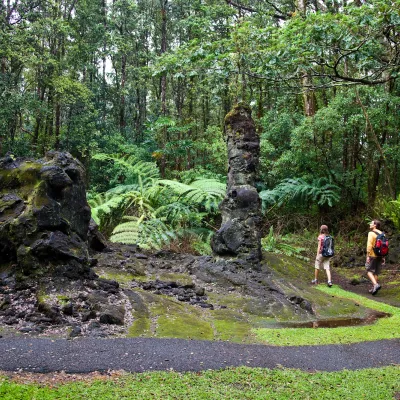
Découvrez des formations naturelles exceptionnelles comme les moulages et les arbres de lave au parc d’État de Lava Trees et nagez dans des piscines naturelles formées par la marée et chauffées par les volcans.
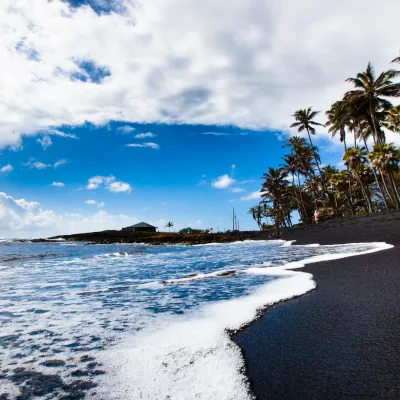
Visitez un volcan actif au Hawaii Volcanoes National Park et apprenez-en plus sur la formation des îles d’Hawaï.

Eaux bleu turquoise, nombreux hôtels, dégustations de café, lieux historiques et culturels uniques… Vous n’avez que l’embarras du choix.
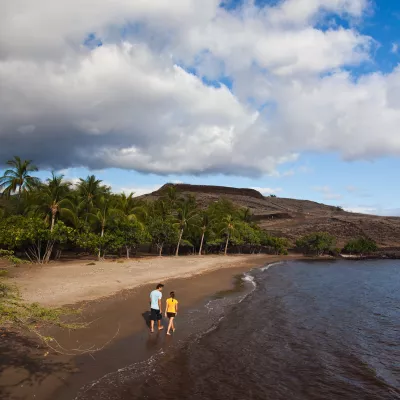
L’île d’Hawaï est souvent surnommée la « capitale du golf » en raison des célèbres greens qui émaillent la côte de Kohala.

Take a memorable drive from Hilo to the Waipiʻo Valley Lookout to see scenic overlooks, waterfalls, botanical gardens and small towns.
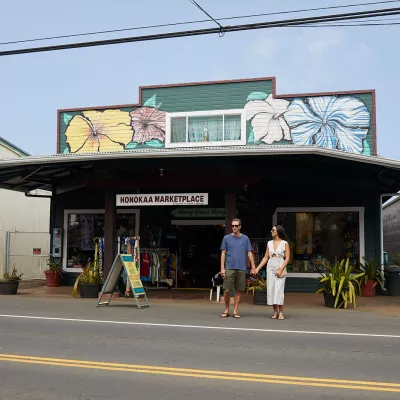
This friendly, small town is the gateway to the Waipiʻo Valley, and home to cute local shops and restaurants.
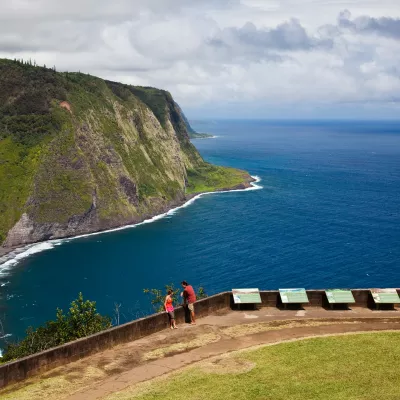
Located on the northern Hāmākua Coast, the sacred Waipiʻo Valley was the boyhood home of King Kamehameha I and an important center for political and religious life in Hawaiʻi.

The Hilo Farmers Market is one of the best open markets in Hawaiʻi, featuring fresh fruit, vegetables, plants and local crafts.

Liliʻuokalani Gardens is a beautifully landscaped, 30-acre Japanese garden featuring fishponds, pagodas and rock gardens.
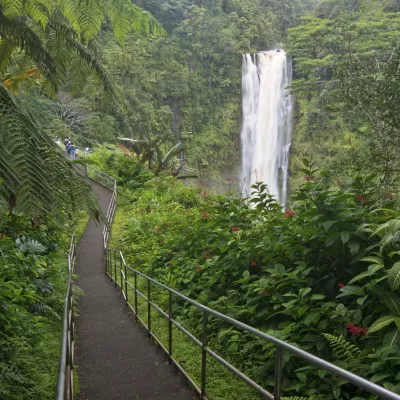
ʻAkaka Falls State Park features two amazing waterfalls, ʻAkaka Falls (442 feet) and Kahuna Falls (100 feet).
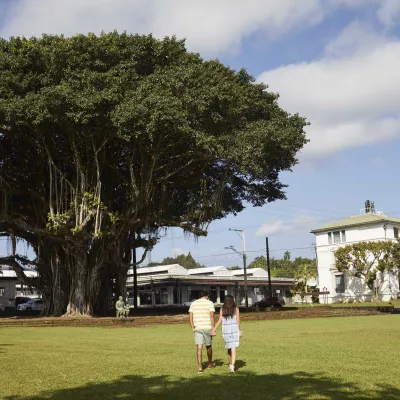
Downtown Hilo is the island of Hawaiʻi's biggest small town, featuring centuries-old wooden storefronts—many of which are on the National Register of Historic Places—housing a variety of sophisticated galleries, shops, restaurants and cultural sites.
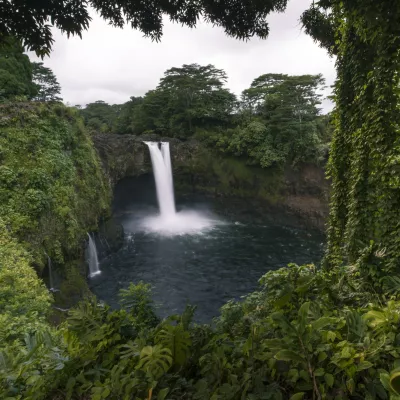
If you’re looking for a waterfall near Downtown Hilo, take a short drive west on Waiānuenue Avenue to Wailuku River State Park.
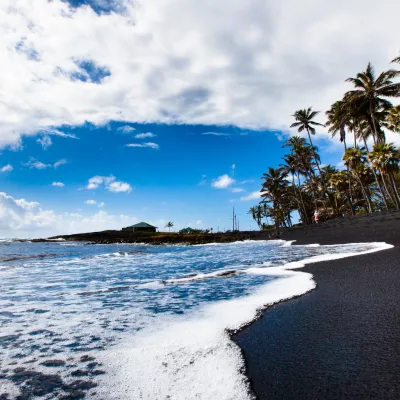
This famous black sand beach is a great photo opportunity and is almost as popular with honu (green sea turtles) as it is with visitors.
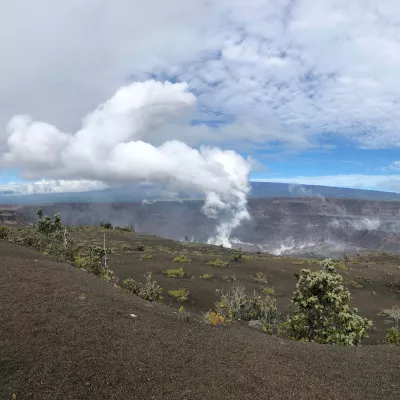
One of the state’s most famous attractions is a testament to the power of nature and a rare opportunity to see an active volcano.

Part of the National Park System, this historic site is home to one of the largest and last heiau (temple) built in Hawaiʻi.
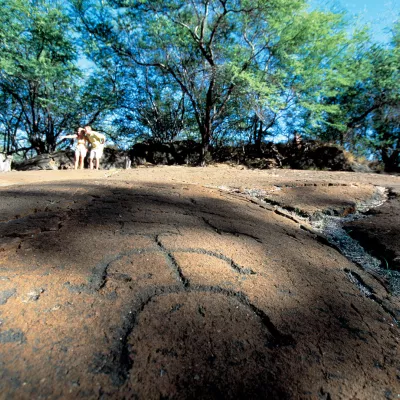
The Puakō Petroglyph Archaeological Preserve is one of the most extensive petroglyph fields in Hawaiʻi.
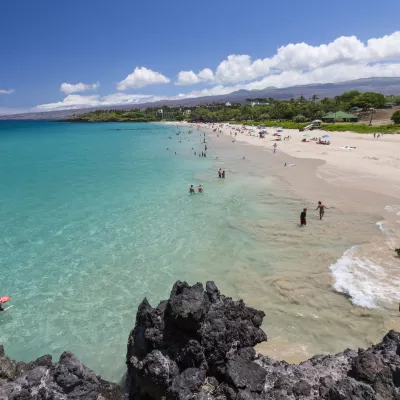
Hāpuna Beach on the Kohala Coast is one of the largest white sand beaches on the island of Hawaiʻi.
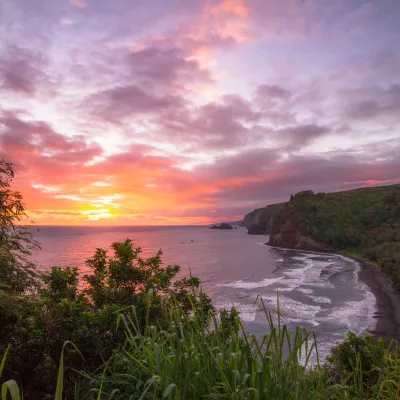
The Pololū Valley Lookout offers a breathtaking view overlooking Pololū Valley, a black sand beach and the northeastern coastline.
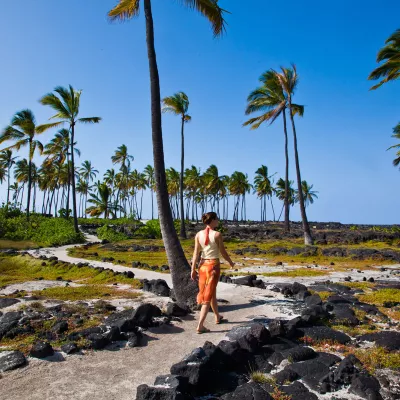
Visit Pu‘uhonua o Hōnaunau and learn about early Hawaiian history at this National Historic Park, historic place of refuge and former royal grounds.
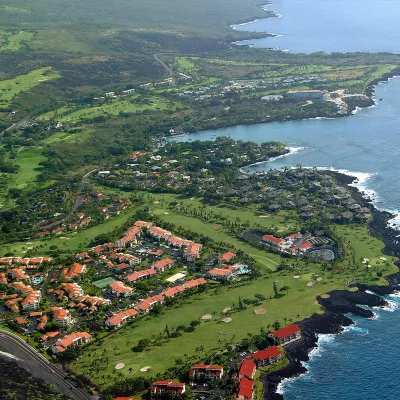
The Keauhou resort area, just south of Historic Kailua Village in Kona, is where you can often spot manta rays and honu (Hawaiian green sea turtles).
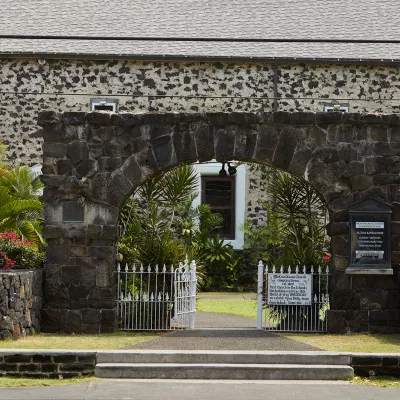
Historic Kailua Village is a lively seaside town in the heart of Kona home to shopping, dining and important historic sites.
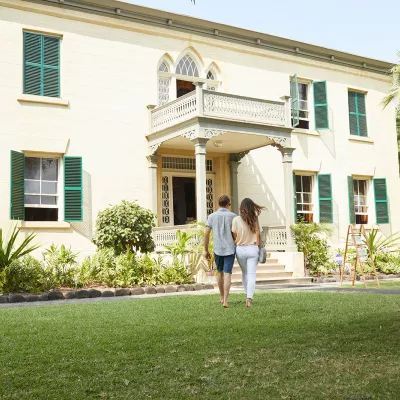
Travel back to the days of the Hawaiian monarchy at Hulihe‘e Palace, located right on Ali‘i Drive in the heart of Historic Kailua Village (Kailua-Kona).
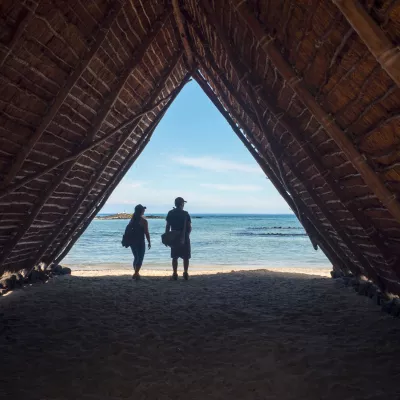
Just south of Ellison Onizuka Kona International Airport, is Kaloko-Honokōhau National Historical Park. Explore this coastal park and discover how an early Hawaiian settlement survived on the rugged Kona coast.

